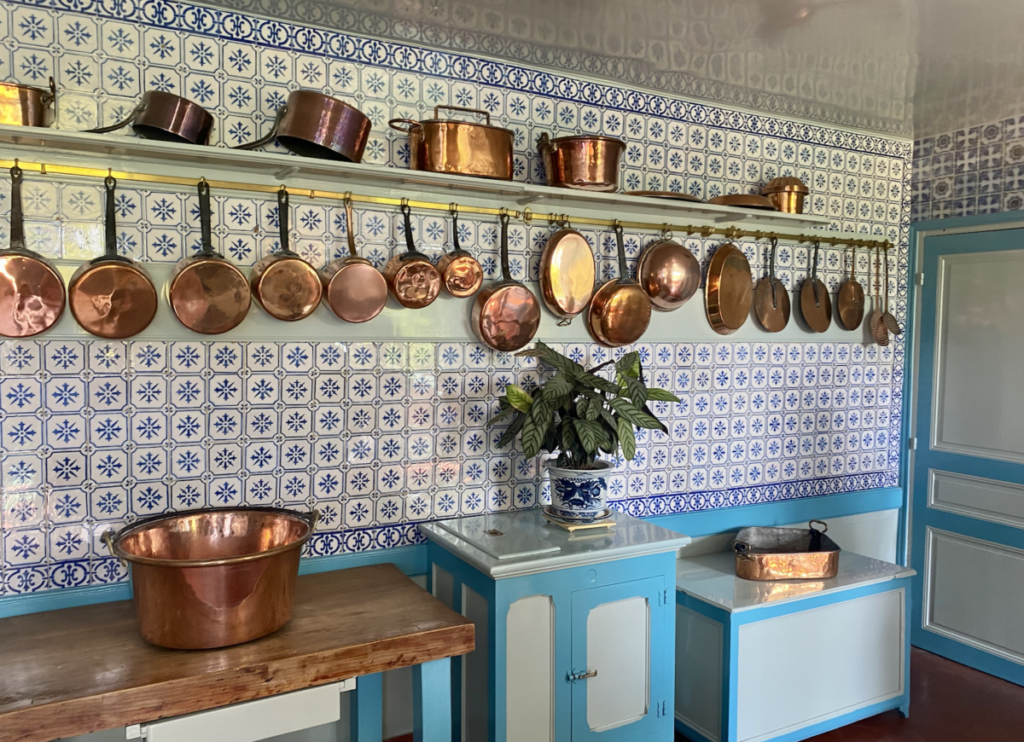
Food + Art


Exploring neuroscience while exploring Paris

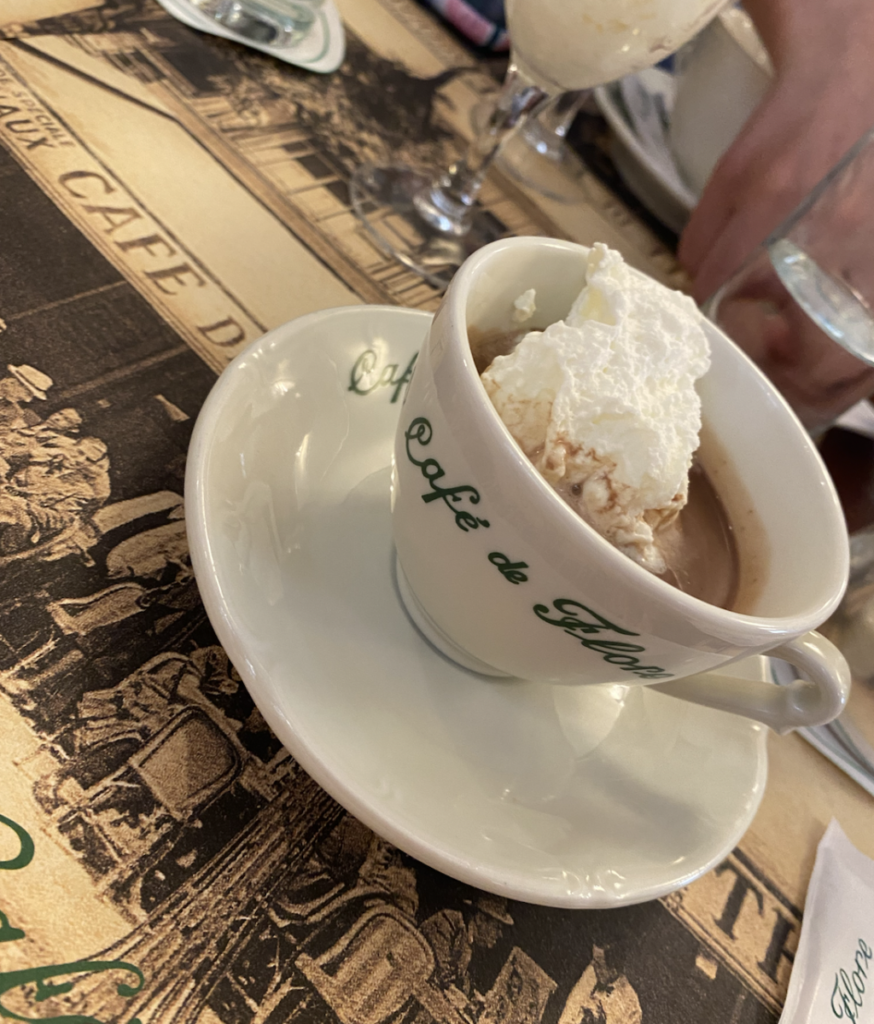
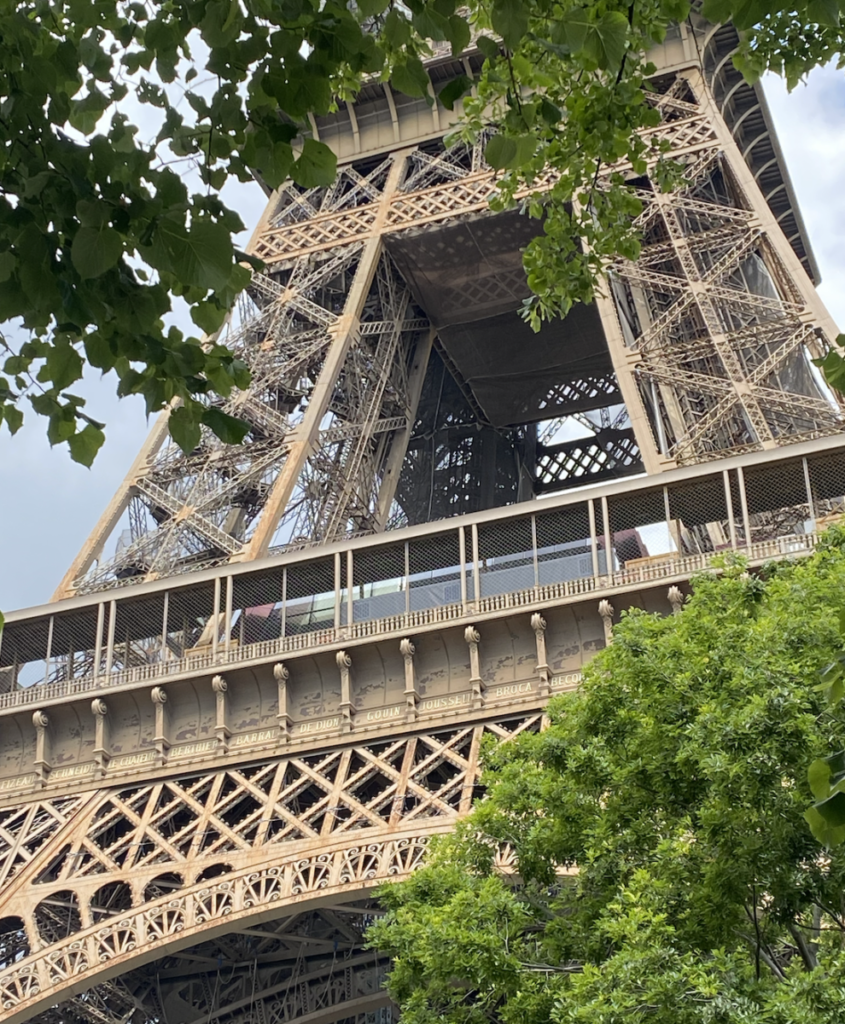
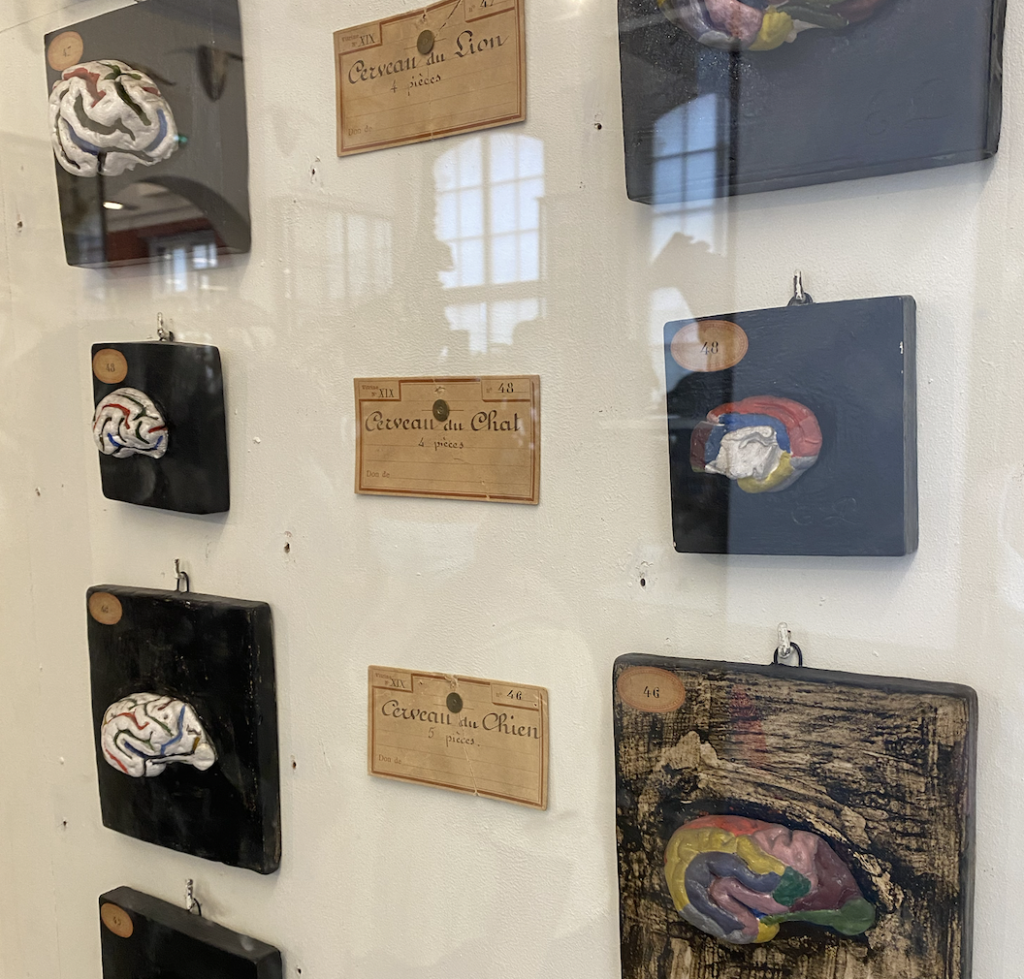
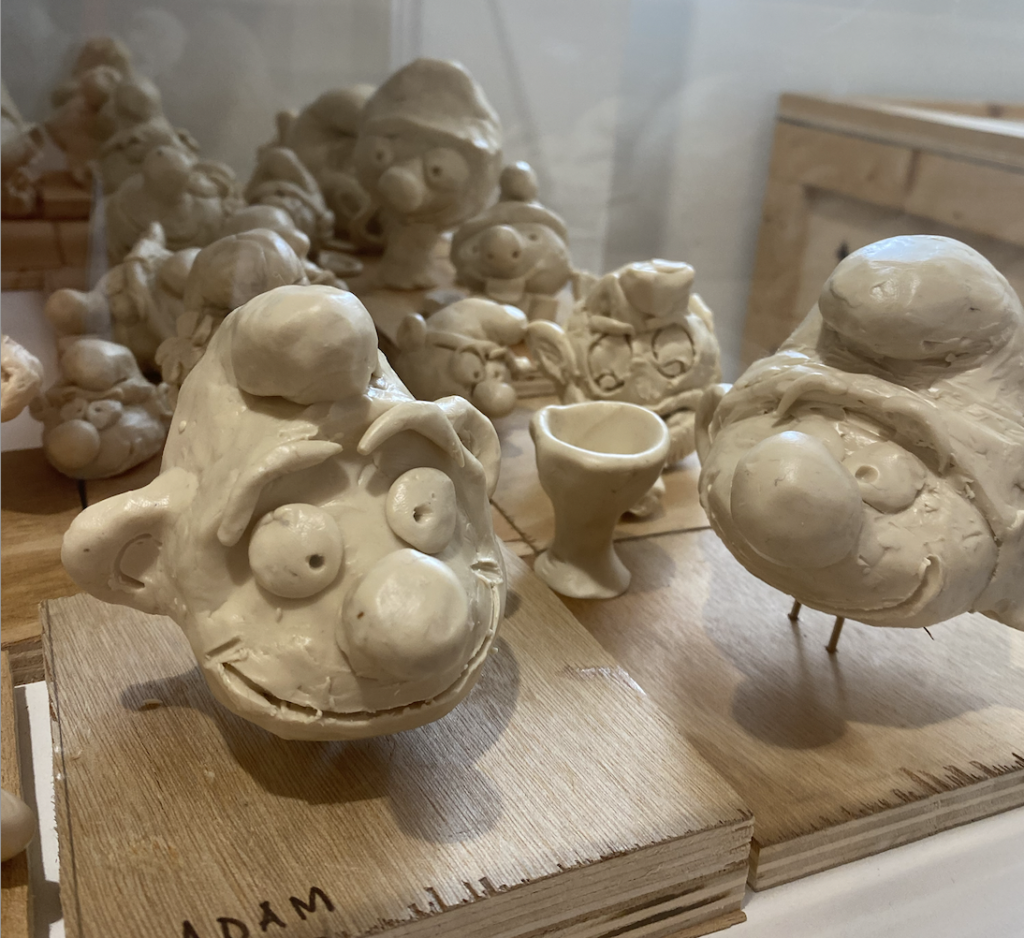
I have been absolutely obsessed with the Smurfs ever since I stepped foot in the gift shop of the Bavarian Inn in Frankenmuth, Michigan (a true diamond of the state of Michigan that holds a special place in my heart). I started a collection of Smurfs figurines when I was 10 years old that I still have adorning my apartment back in Atlanta. And don’t get me started on the Smurfs Village iPhone game… The nostalgia I feel toward the Smurfs is a reminder of yearly visits to my dad’s home town and a general feeling of appreciation toward the Midwest that I have only been able to access since moving to the south for college. Due to my deep connection to the Smurfs, I was overjoyed when I saw a collection of clay Smurf figures in the Musée des Arts et Métiers on a class excursion. They were a reminder of home at the midpoint of my time living in Paris. They also made me think about the neuroscience of nostalgia, and what purpose it might serve.
In a study by Jiang et al. in 2021, it was shown that nostalgia is a positive way to reflect on one’s past that increases optimism and reduces bitterness. This relationship was seen in both British and Chinese participants, providing evidence that nostalgia may work similarly across cultures. Entering senior year of college, I have definitely been doing some reflecting on my 3 years at Emory as well as experiences in my childhood that have shaped me into who I am today. It has always been important to me to hold onto relics of childhood, like the Smurfs, that incorporate childlike wonder and whimsy into my everyday life as I continue to learn and grow.
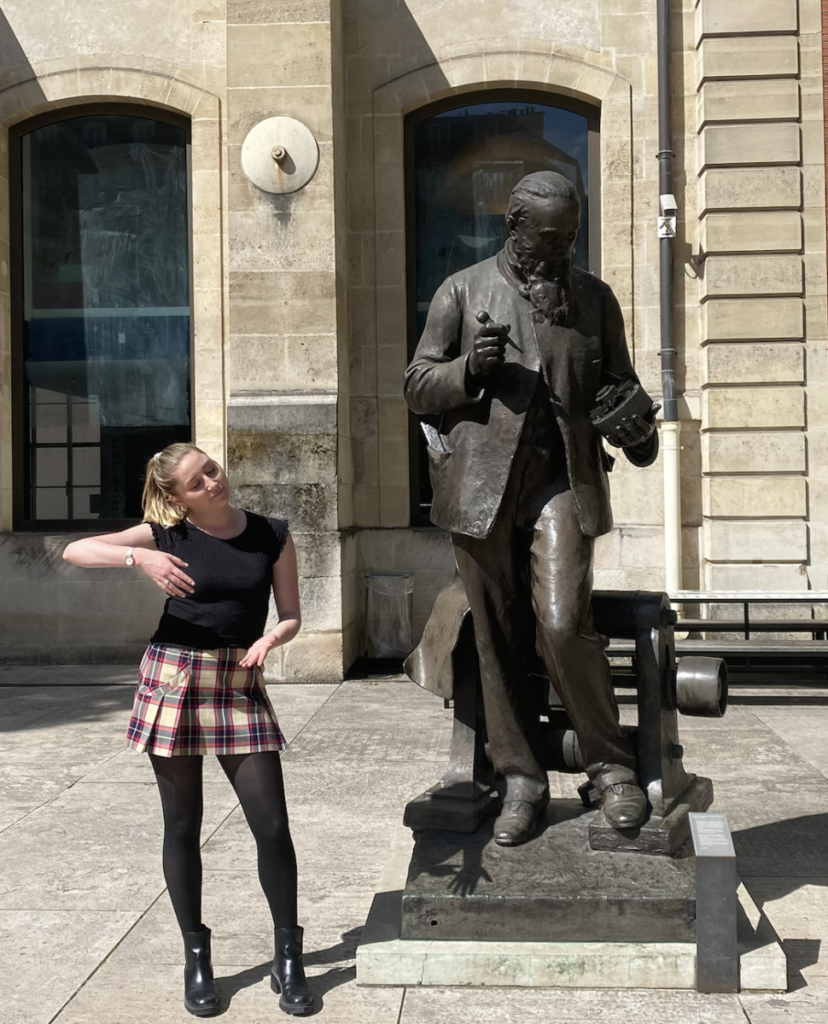
While it is easy to get in a rut of being nervous and a little bit scared about the future, keeping a sense of nostalgia has actually helped me to not get stuck in the past. From my current vantage point, being able to look back on both positive and negative moments in my life and see how they shifted my path is something that I value and appreciate. I think that many people in this program might relate to the feeling of not being completely sure what they want to do next. The uncertainty can be crippling, but it is also a unique experience where the options for next steps are endless. Thinking back on the reflecting I was doing at this point in my high school career 4 years ago, I also know that while I may not fully understand what is happening in my life right now, I will one day be able to look back on this time in the same way I think about the Smurfs at the Bavarian Inn (seriously, if you ever find yourself in the middle of Michigan you have to try the Frankenmuth chicken).
I didn’t think I would be reflecting on my time in Paris by likening it to Frankenmuth, but I look forward to reminiscing on all that I have learned here for years to come.
References:
Jiang, T., Cheung, W. Y., Wildschut, T., & Sedikides, C. (2021). Nostalgia, reflection, brooding: Psychological benefits and autobiographical memory functions. Consciousness and cognition, 90, 103107.
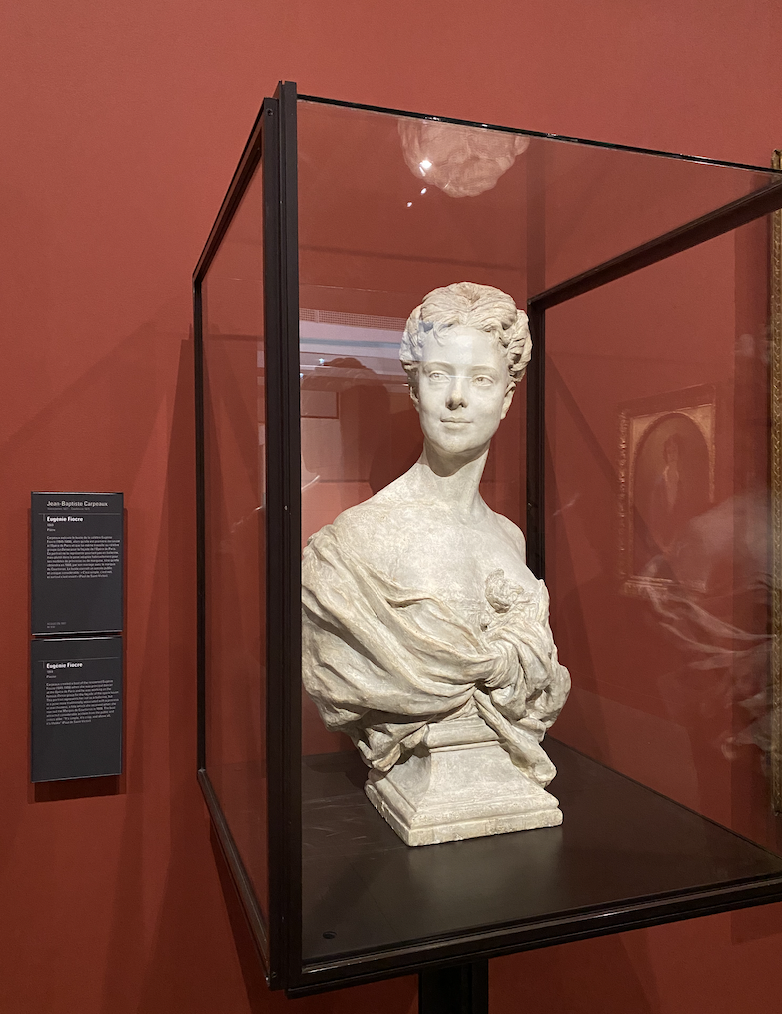
Even though this was our two paper week, Zoe and I still found time to visit the Musee d’Orsay on Wednesday afternoon. It’s about a 15 minute walk along the Seine from our apartment, and we stopped at the Bouquinistes, or booksellers, on our way for some posters and trinkets. We’re going to have to go back again this week because we only got through the first two floors, which focused a lot on the architecture of Paris and also featured many sculptures. On my unofficial quest to incorporate dance into every blog post, I found a bust of Eugenie Fiocre by Jean-Baptiste Carpeaux from 1863. I was initially drawn to the bust because of its intricacies in the details of the fabric and hair, but with the help of my trusty google translate app, I realized Eugenie Fiocre was a principal dancer with the Paris Opera Ballet. She was the first to dance many of the principal roles in ballets the company still performs today and is even depicted in a Degas painting. She was definitely a huge celebrity in France in the late 1800s, which was a really interesting concept to think about. From what I’ve seen around Paris thus far, only very powerful people like politicians or war heroes have had busts of themselves made, so it was cool to see a famous dancer also be immortalized in this way.
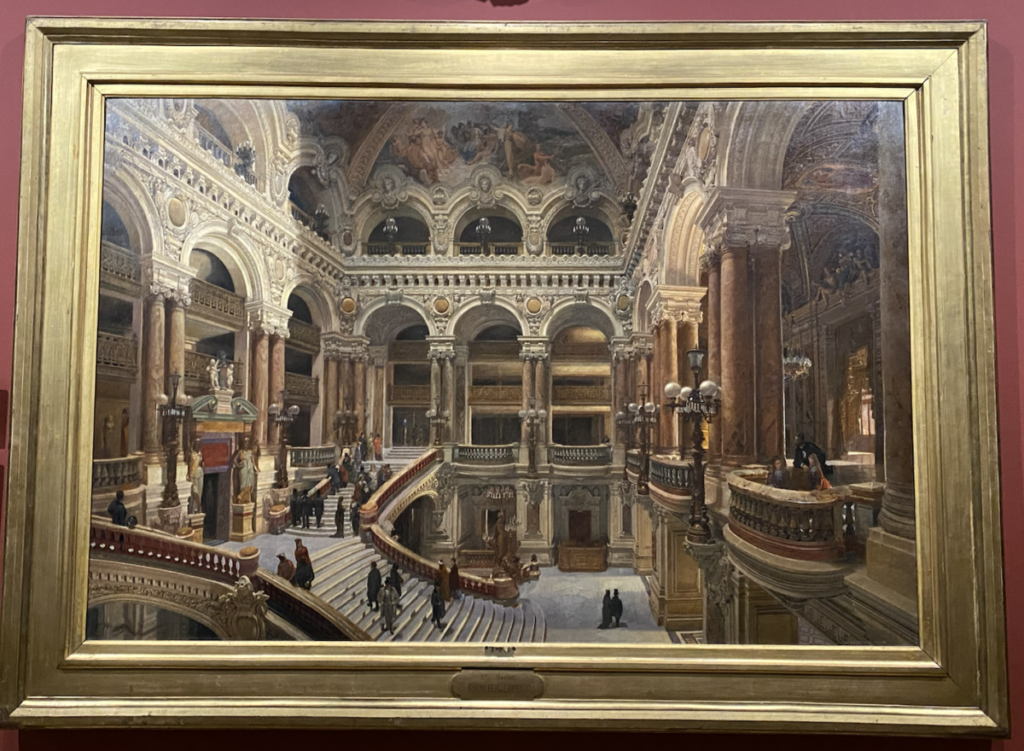
This got me thinking about the persistence of the idea of fame and celebrity throughout history. I wondered what it is about humans that makes us become so invested in the lives of people we don’t know. There has been research investigating what makes some people more prone to “celebrity worship” than others (McCutcheon et al. 2002). In some cases, people can become so invested in the lives of their favorite celebrities that they become addicted to feeling a personal connection with that person. The Celebrity Worship Scale, created by McCutcheon, Lange, and Houran, laid the groundwork for a study by Sansone et al. in 2014. They identified celebrity worship as a continuum ranging from enjoying watching and reading about a celebrity to showing excessive empathy and obsessive behavior toward a celebrity (Sansone et al. 2014). These studies show how the idea of celebrity in human culture has had an impact on clinical psychiatry, which I had not thought about before. From even before Eugenie Fiocre to the Kardashians today, humans have been fascinated by fame for many years, not without implications on the brain.

References:
McCutcheon, L. E., Lange, R., & Houran, J. (2002). Conceptualization and measurement of celebrity worship. British journal of psychology (London, England : 1953), 93(Pt 1), 67–87.
Sansone, R. A., & Sansone, L. A. (2014). “I’m Your Number One Fan”- A Clinical Look at Celebrity Worship. Innovations in clinical neuroscience, 11(1-2), 39–43.
This week Zoe, Grace and I went to a ballet at the Royal Opera of Versailles. We took the train down to Versailles in the rain and had a moment of panic when our connecting train was delayed. Thanks to our fantastic Uber driver, however, we made it to the palace just in time for the show. Seeing a ballet was my top bucket list item while in Paris, so this was a highlight of my time here so far. The Malandain Ballet Biarritz performed their contemporary ballet Marie-Antoinette choreographed by Thierry Malandain. The work explored the relationship between Marie Antoinette and Louis XVI from their wedding night in 1770 (she was 15 and he was 14) to the storming of Versailles in 1789. The coolest part of the experience for me was that the ballet depicted specific scenes in Marie Antoinette’s life, like watching the play Perseus with Louis XVI, that happened in the same theater we were sitting in. Being able to watch the ballet that takes place in Versailles from Versailles was definitely a unique experience that added a very special component to the show.
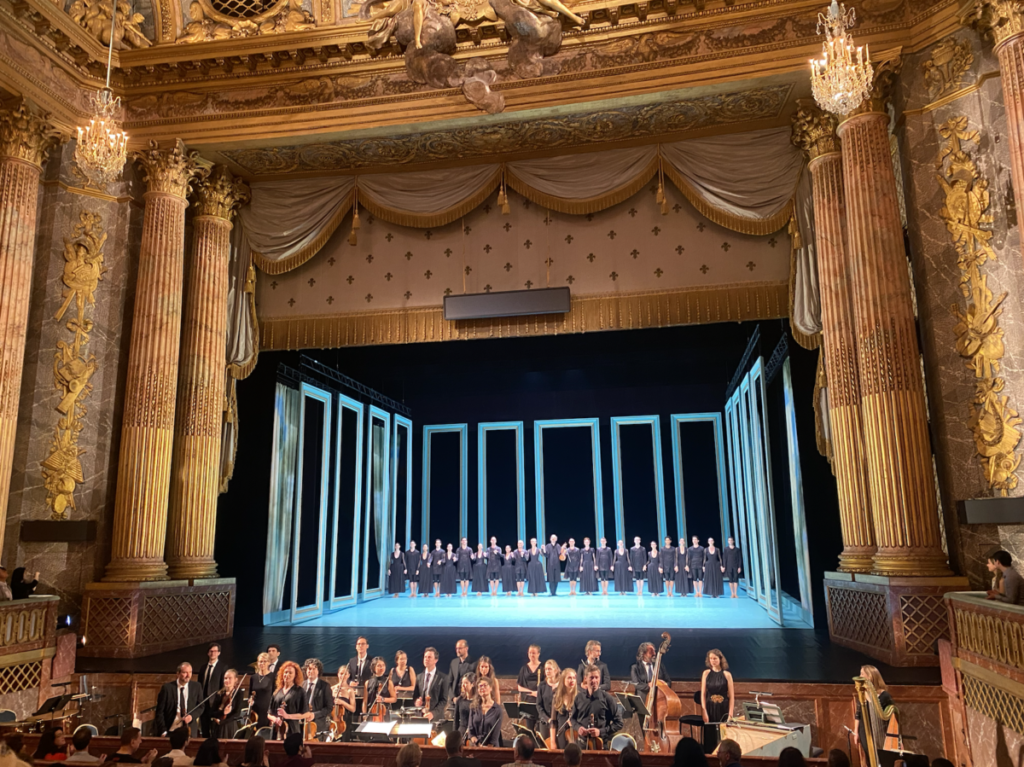
The final scene of the ballet was at the beginning of the French Revolution. According to legend, Marie Antoinette’s hair turned white overnight, on the day before she was to be executed. When I researched more about Marie Antoinette’s life after the show, I learned that this is a phenomenon that has been recorded a few times in history that is now referred to as “Marie Antoinette syndrome”. While “Marie Antoinette syndrome”, or the sudden whitening of hair, is largely believed to be a myth, Skellett et al. argue that the historical account of Marie Antoinette can simply be explained by either temporary hair dye washing or alopecia triggered by stress (Skellett et al. 2008). The link between stress and alopecia can be seen in the hypothalamic-pituitary-adrenal (HPA) axis that is involved in regulating stress hormones. Some patients with alopecia areata have had upregulated levels of corticotropin releasing hormone (CRH) receptors in hair follicles (Paus et al. 2009). CRH is a key hormone in the HPA axis that leads to the release of cortisol. Since Marie Antoinette was definitely experiencing extreme amounts of stress the night before her execution, her HPA axis was probably secreting a lot of CRH and a lot of cortisol. This evidence could then help explain the case of “Marie Antoinette syndrome” she experienced.
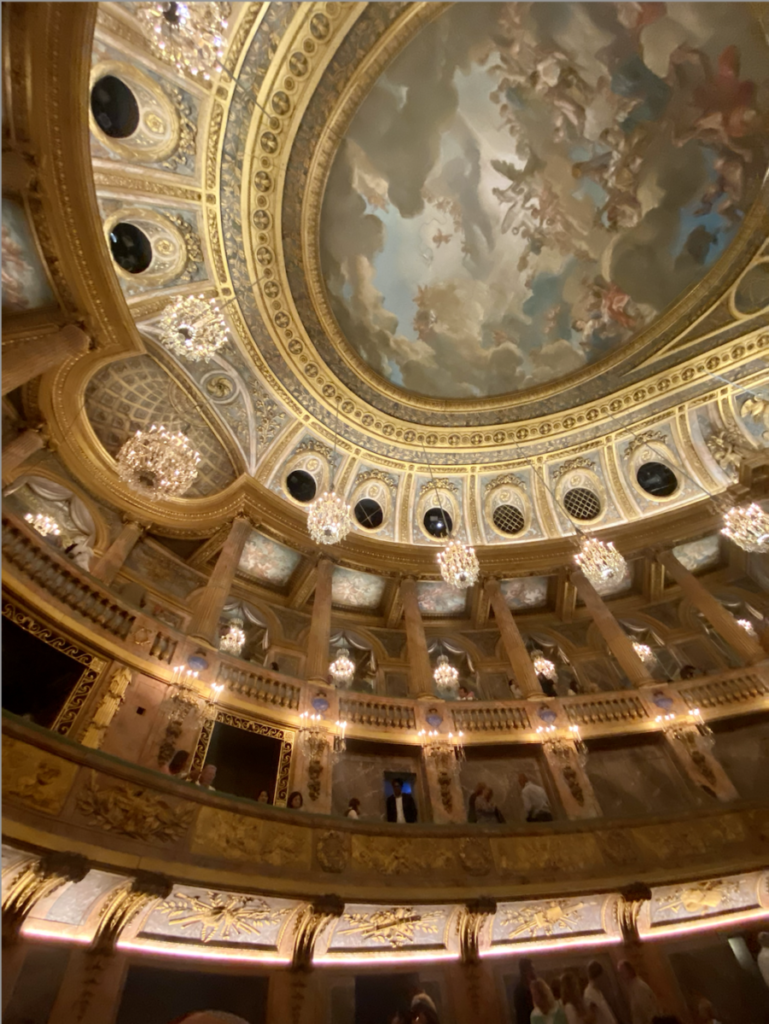

References:
Paus, R., & Arck, P. (2009). Neuroendocrine perspectives in alopecia areata: does stress play a role?. The Journal of investigative dermatology, 129(6), 1324–1326. https://doi.org/10.1038/jid.2009.111
Skellett, A. M., Millington, G. W., & Levell, N. J. (2008). Sudden whitening of the hair: an historical fiction?. Journal of the Royal Society of Medicine, 101(12), 574–576. https://doi.org/10.1258/jrsm.2008.080337
The visit to the famed Père Lachaise Cemetery was a true reminder of how much French culture emphasizes and reveres the arts. It is the largest cemetery in Paris, hosting over 3 million visitors each year and housing the burial sites of renowned musicians, singers, writers, and dancers, among others. The size of the cemetery, as well as the intricacy and grandeur of each tombstone and columbarium are a testament to the French culture of honoring their loved ones, especially artists. Of the many notable people buried there, I was on a mission to find the columbarium of Isadora Duncan, an American dancer who is credited with being one of the founders of modern dance in the western world. As France was also the birthplace of ballet, Duncan’s final resting place being Paris is a symbol of the eminent role of dance in French culture, both in respecting classical forms and encouraging the art to grow and change.
Isadora Duncan was hard to find at Père Lachaise because, unlike many of the other famous figures buried there, she was cremated and was at the Père Lachaise Columbarium. The columbarium is a huge structure with memorial tiles lining two stories of each wall, but with the help of Elena, Robina, Jewel, and Jacob (and Google), we finally located her. Duncan’s memorial is certainly more modest than some of the other sites at Père Lachaise. However, I noticed a note above her tile that read “Merci pour la vraie danse!” which translates to “Thank you for real dance!” This is just a small example of French appreciation for dance, but stuck out to me nonetheless.
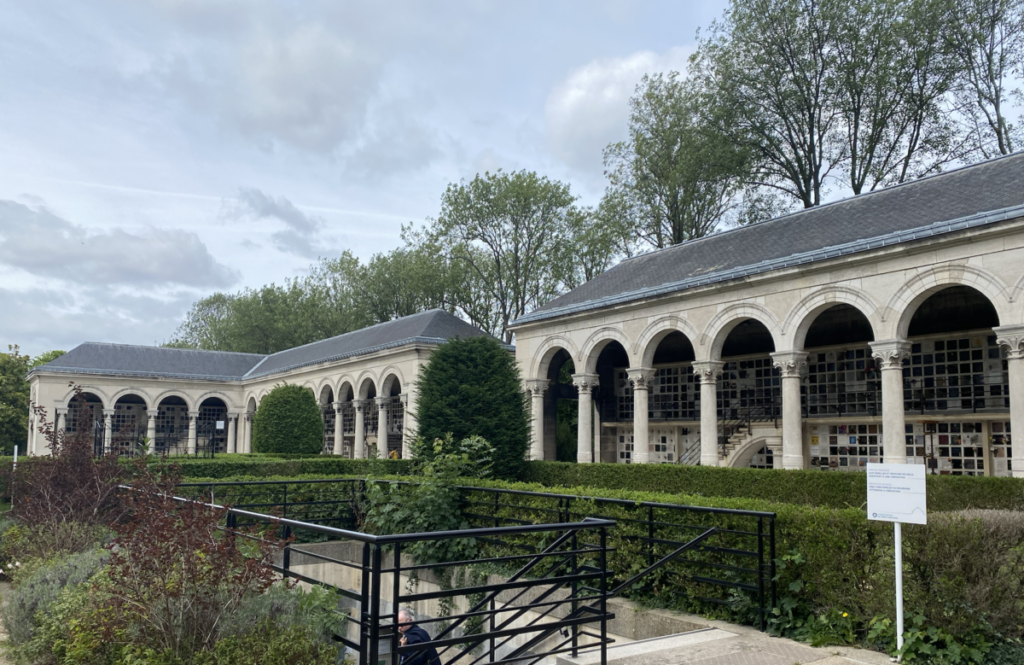
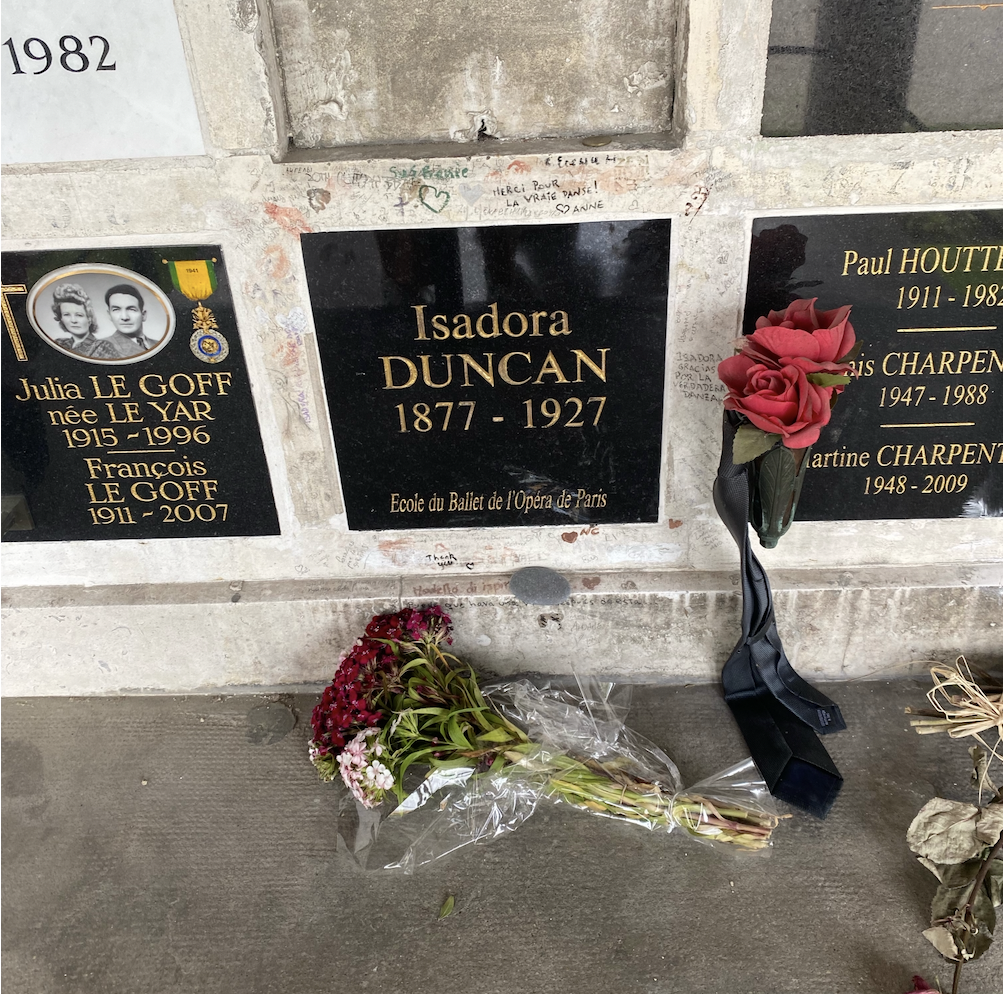
As a modern dancer myself, I understand how dance came to be such an appreciated art form in France, but I am also interested in the effects of dance on the brain that also may make it a useful intervention in movement disorders such as Parkinson’s Disease (PD). Research by Burzynska et al. in 2017 showed that dancers had greater functional connectivity in areas of the brain related to motor learning. This could be a reflection in the brain that dancers have better motor coordination and balance than non-dancers. As motor coordination and balance are two areas in which people with motor impairments typically are lacking, this finding supports work being done at Emory by Dr. Madeleine Hackney. Dr. Hackney is developing dance-based rehabilitation interventions for individuals with PD in order to improve motor skill and cognition in PD patients. Making connections between the greats of dance history and beginning to understand what is happening inside the brains of dancers at Père Lachaise Cemetery was a great way to end the first week of classes here in Paris!
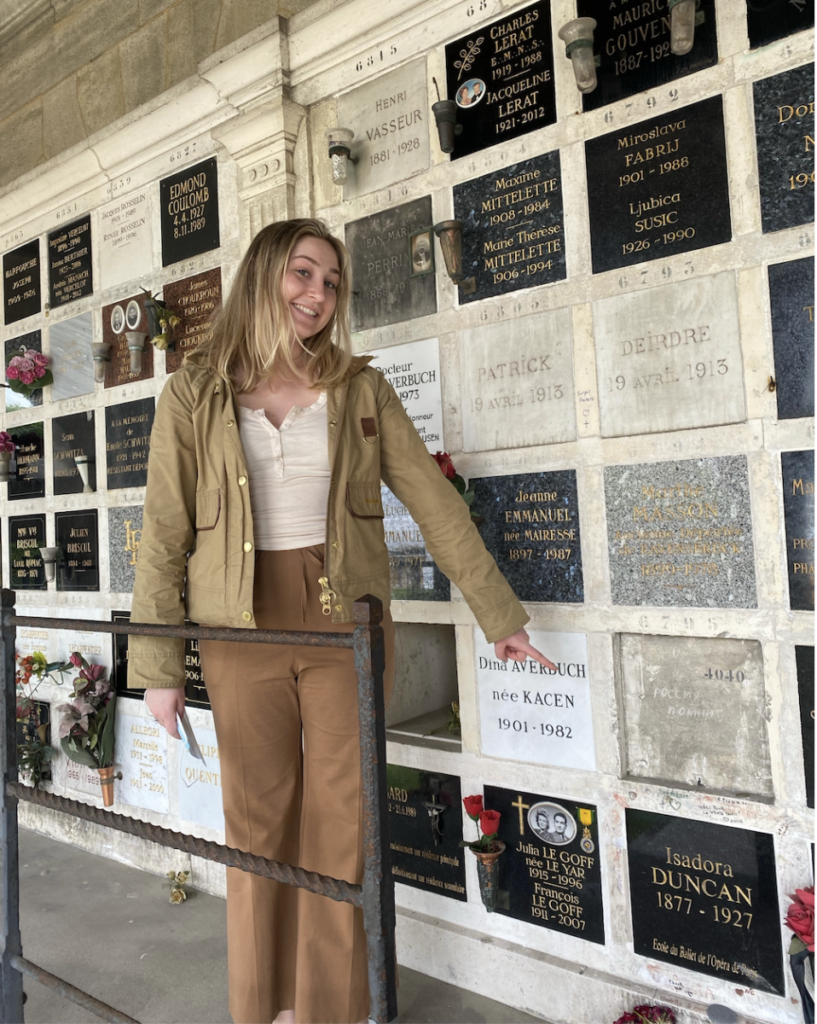
References:
Burzynska, A. Z., Finc, K., Taylor, B. K., Knecht, A. M., & Kramer, A. F. (2017). The Dancing Brain: Structural and Functional Signatures of Expert Dance Training. Frontiers in human neuroscience, 11, 566. https://doi.org/10.3389/fnhum.2017.00566
Emmanouilidis, S., Hackney, M. E., Slade, S. C., Heng, H., Jazayeri, D., & Morris, M. E. (2021). Dance Is an Accessible Physical Activity for People with Parkinson’s Disease. Parkinson’s disease, 2021, 7516504. https://doi.org/10.1155/2021/7516504